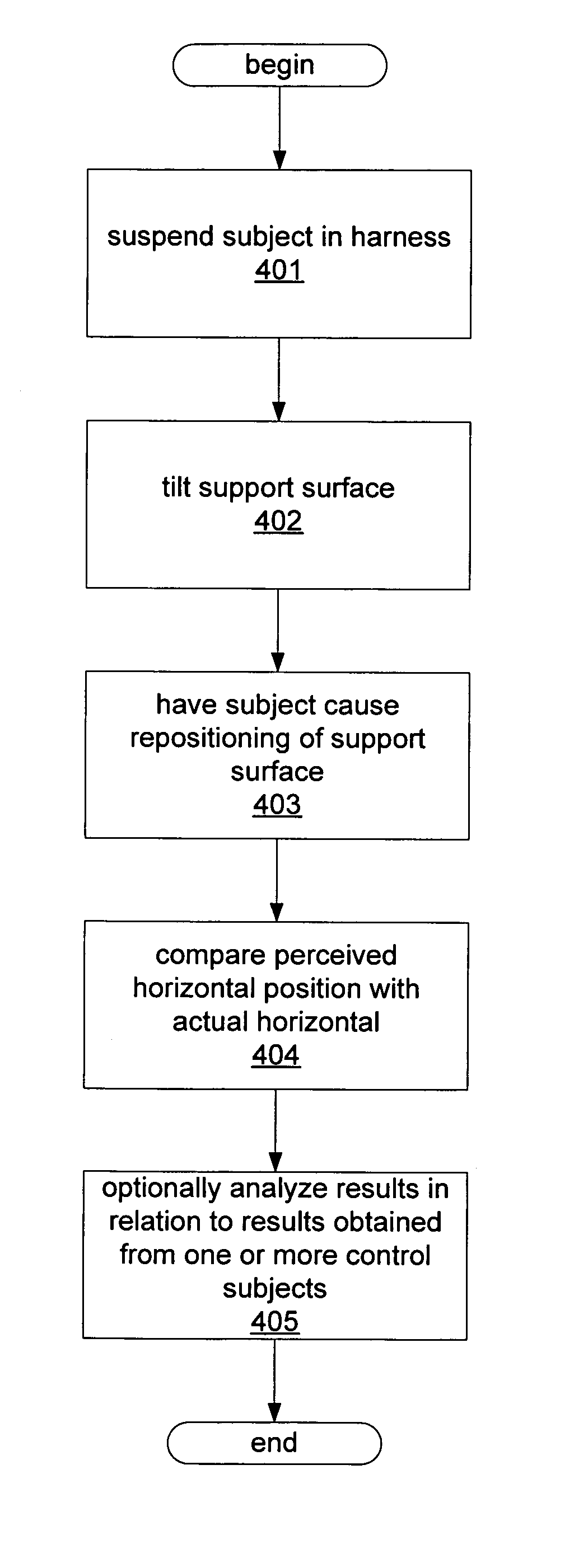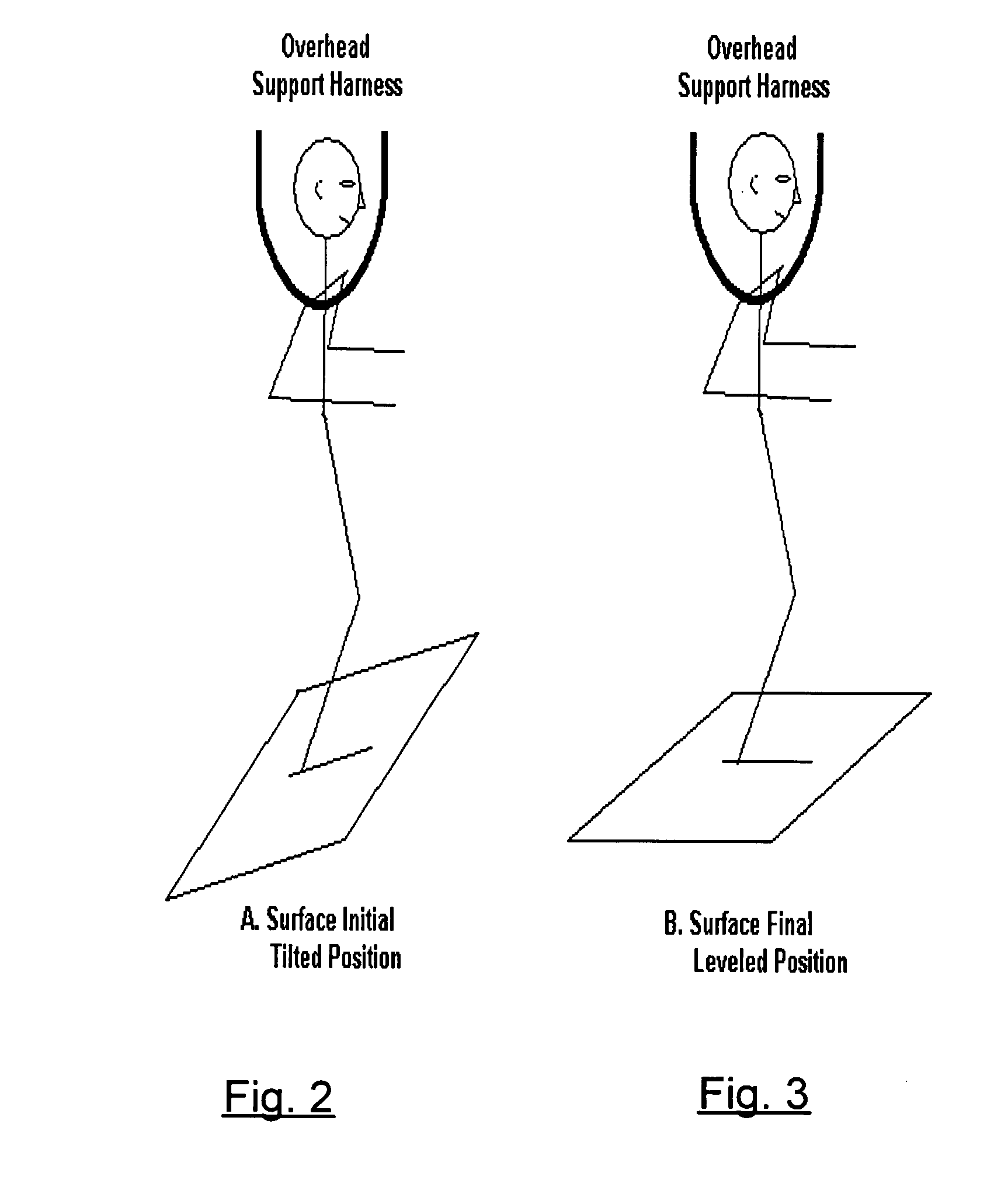Method and system for analyzing status of balance functions in patients with acute neurological disorders
a neurological disorder and status analysis technology, applied in the field of neurodegenerative disorders, can solve the problems of inability to stand freely for extended periods of time, inability to walk, prior art means for assessing somatosensory functions of feet and legs, vibration may or may not improve balance function,
- Summary
- Abstract
- Description
- Claims
- Application Information
AI Technical Summary
Benefits of technology
Problems solved by technology
Method used
Image
Examples
Embodiment Construction
[0030] Embodiments of the present invention provide an objective, quantitative means to assess an individual's ability to sense orientation using somatosensory inputs derived from contact of the individual with a support surface while not requiring the individual to stand freely during test administration. In a typical embodiment, the somatosensory inputs are derived from the muscles and joints of a single leg or of both legs together, while the erect standing subject is suspended in a partial weight bearing harness while in contact with the support surface and bearing a fraction of the body weight. Such embodiments are pertinent in cases where the individual must be assisted in order to achieve or maintain a standing, sitting or other erect position.
[0031]FIG. 1 is a block diagram illustrating of a system, in accordance with one embodiment of the invention, for assessing a subject's ability to sense orientation using somatosensory inputs derived from the muscles and joints of one ...
PUM
 Login to View More
Login to View More Abstract
Description
Claims
Application Information
 Login to View More
Login to View More - R&D
- Intellectual Property
- Life Sciences
- Materials
- Tech Scout
- Unparalleled Data Quality
- Higher Quality Content
- 60% Fewer Hallucinations
Browse by: Latest US Patents, China's latest patents, Technical Efficacy Thesaurus, Application Domain, Technology Topic, Popular Technical Reports.
© 2025 PatSnap. All rights reserved.Legal|Privacy policy|Modern Slavery Act Transparency Statement|Sitemap|About US| Contact US: help@patsnap.com



